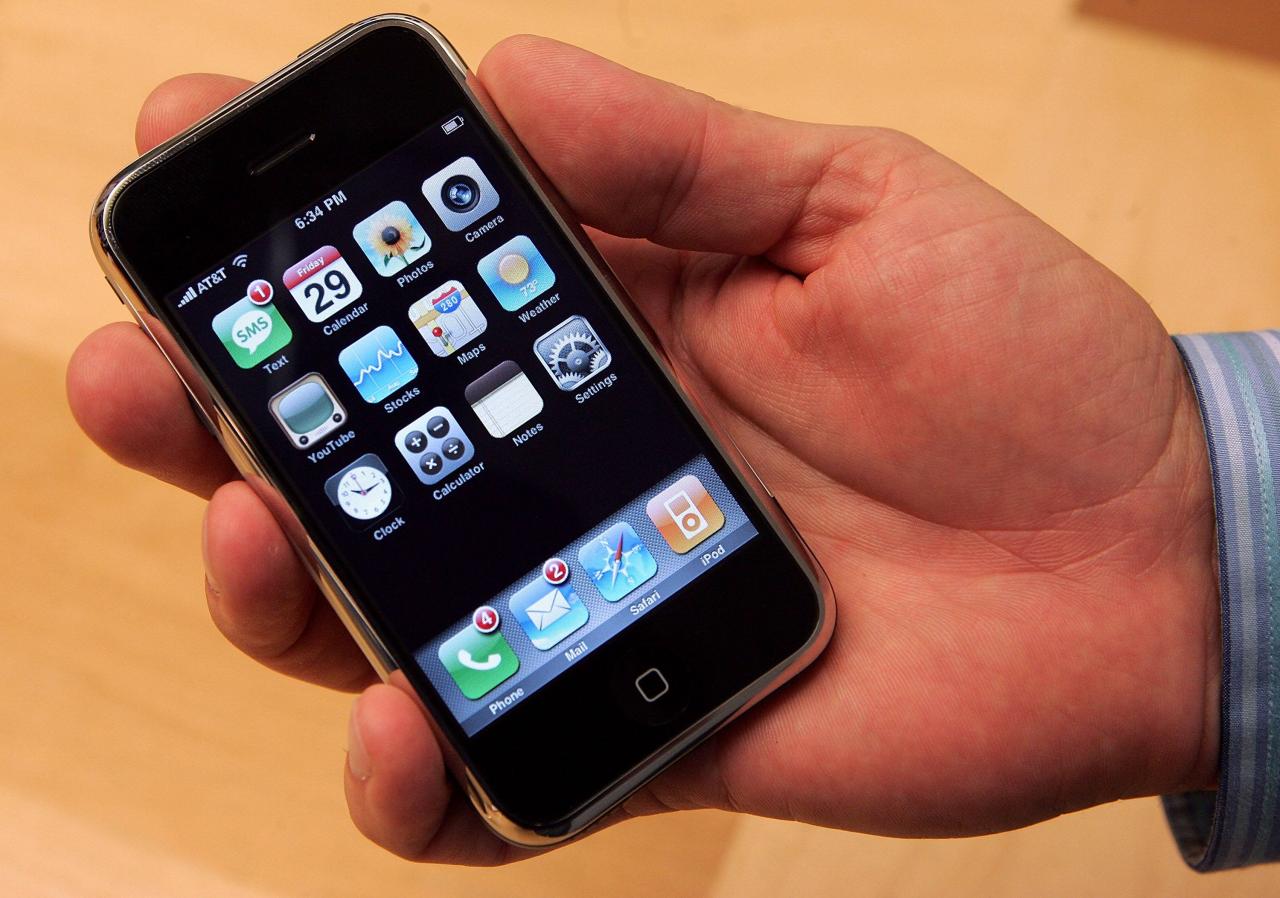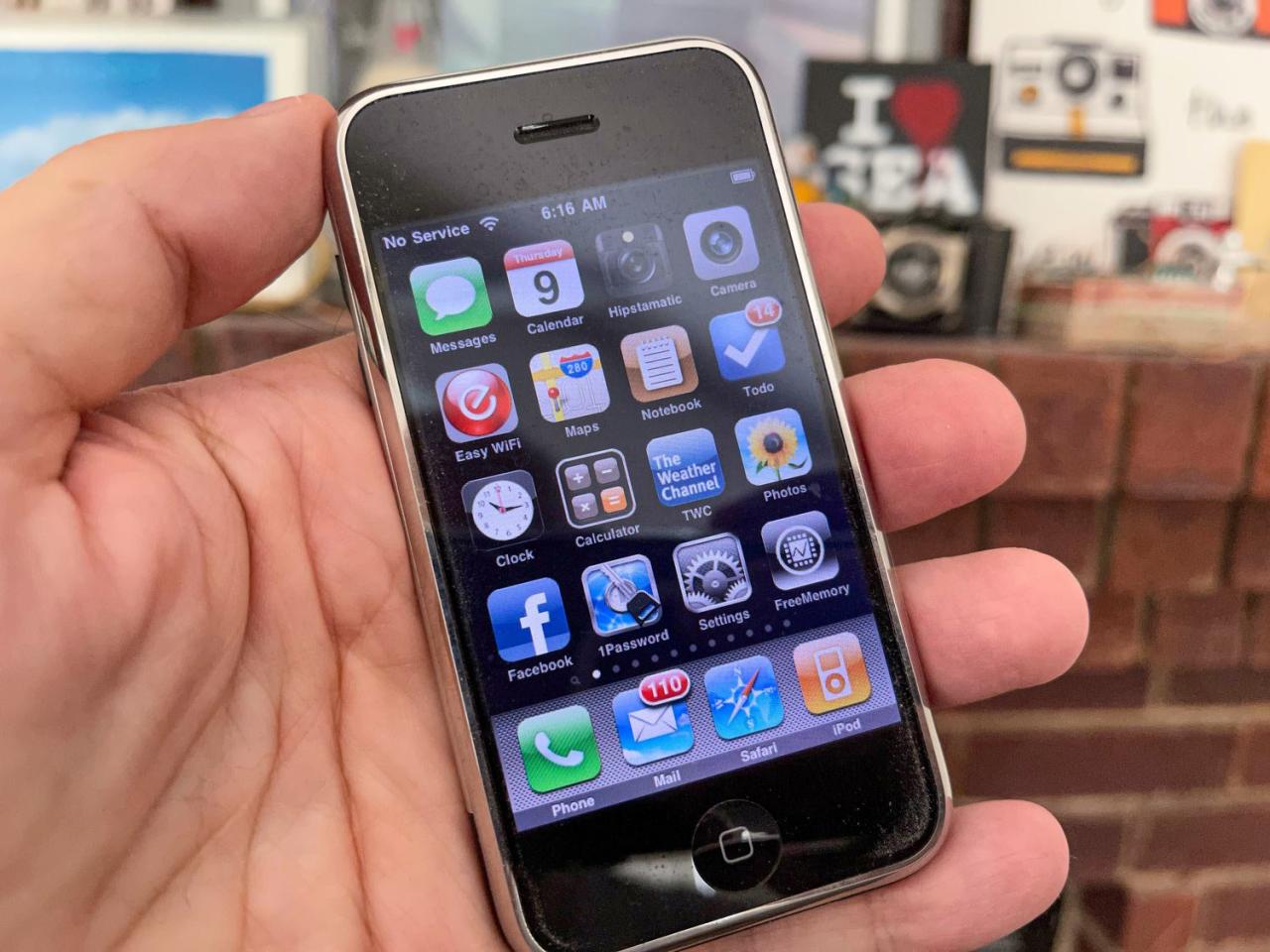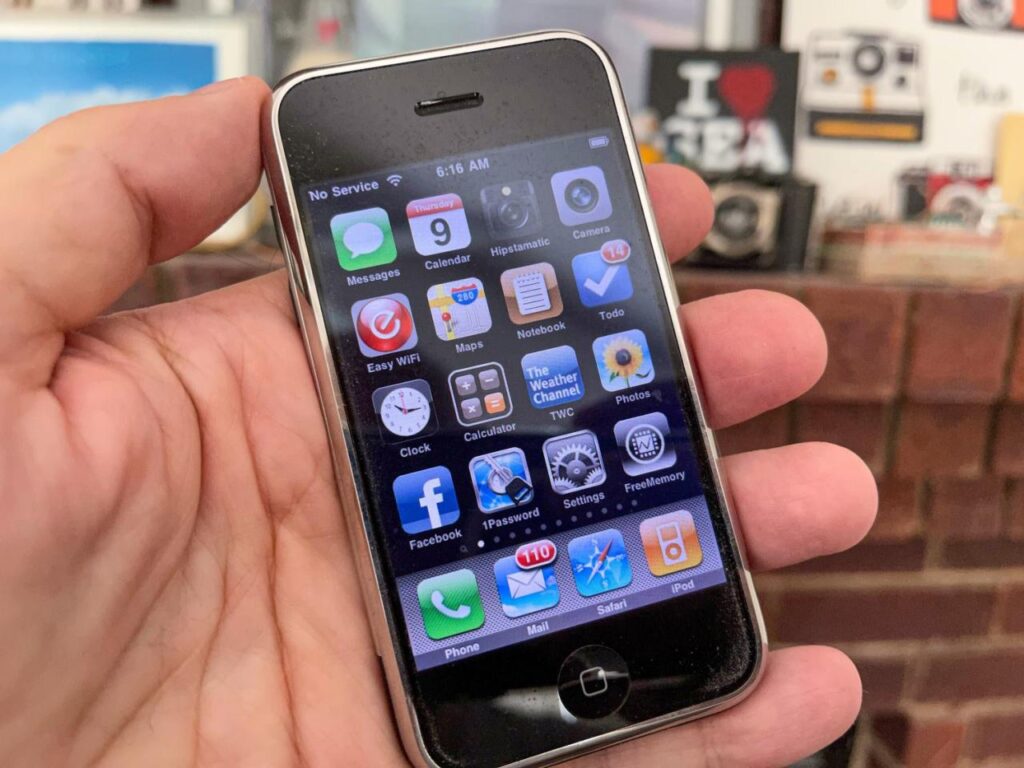Initial Release and Impact

The first iPhone was released on June 29, 2007, marking a pivotal moment in the history of mobile technology. This revolutionary device set the stage for the modern smartphone era, introducing an unprecedented combination of features and capabilities that forever changed the way people communicated, consumed information, and interacted with the digital world.
Launch Day and Public Reception
The iPhone’s launch day was met with immense anticipation and excitement. Apple stores across the country witnessed long lines of eager customers, eager to get their hands on the latest innovation from the Cupertino-based tech giant. The device quickly became a global phenomenon, with millions of units sold within its first year of availability.
Key Events Leading Up to the Release
In the years leading up to the iPhone’s release, Apple had been quietly developing and refining the concept of a touchscreen smartphone. Steve Jobs, Apple’s visionary co-founder, had long believed in the potential of a device that could seamlessly integrate the functionality of a computer with the portability of a phone.
In 2005, Apple acquired the touchscreen technology company FingerWorks, a move that significantly accelerated the development of the iPhone’s intuitive user interface. The company also formed strategic partnerships with key carriers, such as AT&T, to ensure the iPhone’s wide availability at launch.
Impact on the Mobile Industry
The iPhone’s release sent shockwaves through the mobile industry. Its sleek design, user-friendly interface, and innovative features quickly set it apart from competing devices. The iPhone’s success inspired countless other manufacturers to enter the smartphone market, leading to a surge in competition and innovation.
The iPhone also had a profound impact on the way people used mobile phones. Its touchscreen interface made it easier than ever to access information, communicate with others, and enjoy entertainment. The App Store, launched in 2008, further expanded the iPhone’s capabilities, allowing users to customize their devices with a wide range of applications.
Software and Applications
The first iPhone introduced the iOS operating system, a closed-source mobile operating system that became a significant player in the mobile industry. It was designed to provide a user-friendly and intuitive experience, with a focus on touch-based interactions. The iOS operating system has undergone numerous iterations and updates over the years, adding new features and functionalities. It has been a driving force behind the development of mobile applications, creating a vast ecosystem of apps that cater to various needs and interests.
Notable Applications
Upon its launch, the first iPhone came preloaded with a suite of essential applications, including:
- Phone: For making and receiving calls.
- Mail: For sending and receiving emails.
- Safari: For browsing the internet.
- Maps: For navigation and location services.
- Calendar: For managing appointments and events.
- Camera: For taking photos and videos.
- iPod: For playing music and videos.
These applications laid the foundation for the future of mobile app development, providing a glimpse of the potential of smartphones as versatile and feature-rich devices.
Growth of the iOS App Store
The introduction of the App Store in 2008 revolutionized the distribution of mobile applications. It provided a centralized platform for developers to publish and distribute their apps, making them accessible to a global audience. The App Store has experienced exponential growth over the years, with millions of apps available in various categories.
[Insert infographic illustrating the growth of the iOS app store over time.]
The iOS app store has fostered innovation and entrepreneurship, creating opportunities for developers to build successful businesses. It has also transformed the way people use their smartphones, providing access to a wide range of tools, entertainment, and productivity apps.
Cultural Influence

The first iPhone revolutionized not only the way people communicate but also had a profound impact on popular culture. It transformed the way people consume entertainment, access information, and interact with the world around them.
Communication
- The iPhone popularized instant messaging, allowing people to communicate in real-time through apps like iMessage and WhatsApp.
- It made video calling more accessible, enabling people to connect with friends and family face-to-face from anywhere with an internet connection.
Entertainment
- The iPhone created a new era of mobile gaming, with the App Store offering a vast selection of games to download and play.
- It became a portable media player, allowing users to listen to music, watch videos, and read books on the go.
Daily Life
- The iPhone became an essential tool for productivity, with apps for email, calendar, and note-taking.
- It simplified navigation with the introduction of GPS-enabled maps and turn-by-turn directions.
Legacy and Impact on Apple

The first iPhone’s release marked a watershed moment in Apple’s history, propelling the company to the forefront of the smartphone industry and solidifying its reputation as a global technology leader.
The iPhone’s innovative design, intuitive user interface, and powerful software ecosystem set the standard for future smartphones. Its success led to a surge in Apple’s revenue and profits, establishing it as one of the world’s most valuable companies.
Subsequent iPhone Releases and Key Advancements
Since its initial release in 2007, Apple has consistently released new iPhone models with significant advancements and improvements. Key milestones include:
- iPhone 3G (2008): Introduced 3G connectivity, GPS, and the App Store.
- iPhone 4 (2010): Featured a high-resolution Retina display, FaceTime video calling, and a gyroscope.
- iPhone 5 (2012): Introduced a larger display, LTE connectivity, and a new Lightning connector.
- iPhone 6 (2014): Offered a larger screen in two sizes and improved battery life.
- iPhone X (2017): Introduced a bezel-less OLED display, Face ID facial recognition, and wireless charging.
- iPhone 14 (2022): Featured a Dynamic Island notch, satellite connectivity, and improved camera capabilities.
iPhone Sales Figures and Market Share
The iPhone has consistently been one of the best-selling smartphones worldwide, contributing significantly to Apple’s revenue.
| Year | iPhone Sales (millions) | Global Market Share (%) |
|---|---|---|
| 2007 | 6.1 | 1.8% |
| 2010 | 47.4 | 13.9% |
| 2015 | 231.2 | 21.8% |
| 2020 | 233.8 | 17.3% |
| 2022 | 240.9 | 17.7% |
As of 2022, the iPhone holds a significant market share in key regions such as the United States (45%), China (17%), and Europe (27%).
Helpful Answers
What was the significance of the first iPhone’s launch date?
The first iPhone was released on June 29, 2007, marking a watershed moment in the mobile industry. It introduced a groundbreaking combination of design, features, and software that set a new standard for smartphones.
How did the first iPhone compare to other smartphones at the time?
The first iPhone stood out from its competitors with its innovative design, user-friendly interface, and powerful features. It featured a large, high-resolution touchscreen, a fast processor, and a suite of pre-installed applications, making it a truly versatile and capable device.
What was the impact of the first iPhone on mobile app development?
The introduction of the first iPhone and its App Store revolutionized mobile app development. It created a platform for developers to create and distribute innovative applications, leading to the explosion of the mobile app market.







